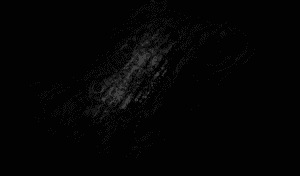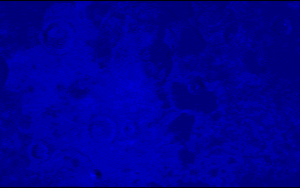Research:
I did research on how different cellular automata vary from each other. I found all of the rules for one-dimensional cellular automata. Of the ![]() elementary cellular automata, there are 88 fundamentally inequivalent rules (Wolfram 2002, p. 57).
elementary cellular automata, there are 88 fundamentally inequivalent rules (Wolfram 2002, p. 57).
Then I read chapter 7 in Dan Shiffman’s “The Nature of Code”, which explains the algorithms of cellular automata, Wolfram classification, the game of life and variations of cellular automata. Besides the explanations of the algorithms, Dan Shiffman mentioned that there are a lot of possibilities for people to explore the variations of cellular automata. He summarized them in seven categories in below( unfortunately I only found a code example for the first category) :
Non-rectangular Grids:
Example: The shape is a hexagon cell.

Probabilistic:
Example: In the Game of Life, the chance to die with four or more neighbors is 80%.
Continuous:
Example: Now, the state of cells is only 0 or 1. What if it’s a floating point?
Image Processing:
Example: Pixel is a cell and color is a state
Historical:
Example: “Visualize the Game of Life by coloring each cell according to how long it’s been alive or dead”
Moving cells:
Example: “Use CA rules in a flocking system. What if each boid had a state (that perhaps informs its steering behaviors) and its neighborhood changed from frame to frame as it moved closer to or further from other boids?”
Nesting:
Example: Each CA cell is another smaller CA system.
Based on the algorithm of CA and Game of Life, Dan Shiffman created a 2D water effect:


Find code examples:
Tinker one implementation:
Original effect:
Tinkered effect:
Reflect:
Cellular automata are widely used in computer science, mathematics, physics, and biology. After my research, I found the cellular automata model can also be used in the field of arts, especially generative arts and nature of code.
The 2D water example combines physics and CA algorithm. It also uses pixel manipulation. And this algorithm can also combine with image processing since the concept of state and cell is widely used in pixel manipulation.
Reference:
“Elementary Cellular Automaton.” From Wolfram MathWorld, mathworld.wolfram.com/ElementaryCellularAutomaton.html.
Shiffman, Daniel. “THE NATURE OF CODE.” The Nature of Code, natureofcode.com/book/chapter-7-cellular-automata/.

It is a really beautiful modification of the rule that uses color, polygon and float living condition numbers. The patterns are beautiful. And you inspired me by your statistical way of studying it, since I realized it may be used into quantum physics simulation with proper arguments (reviving and living condition).
I found this very out of the box and I liked that. When first looking at CA, I hadn’t thought of how it can be implemented outside of the grid-like structure but was fascinated by the few examples I found that had a different take on the algorithm. Your examples take this a step further and really challenge the uses and forms which CA can take. It was also very informative the information you shared on the different variations of CA. This can be really useful for data visualization.